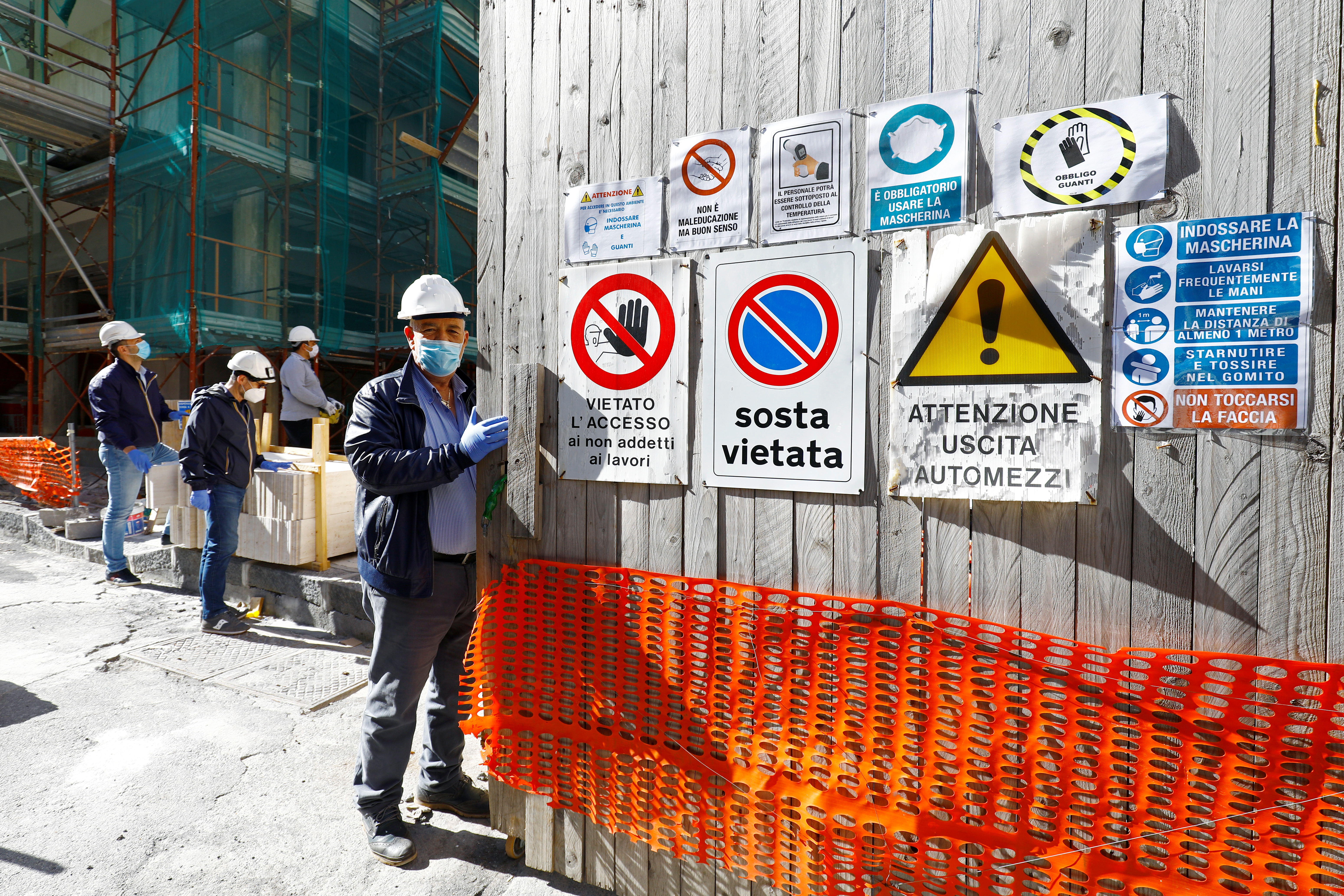How Europe is bailing out its workers
European countries are paying workers who've been sent home by employers. Can they afford it?

European countries are paying workers who've been sent home by employers. Can they afford it? Here's everything you need to know:
What is their plan?
Unlike the U.S., where some 30 million people have filed for unemployment and millions of gig workers are going without income, most European workers are still getting paid through their employers. But instead of requiring workers to apply for unemployment and sending them a $1,200 bailout check, many European Union countries chose to begin paying part of their workers' salaries, so companies would not have to fire them. Germany, for example, is paying workers about 60 percent of their wages up to a cap of $7,575 a month, and France, Spain, Denmark, and the Netherlands have similar plans, although with lower caps. The U.K. is paying up to 80 percent of wages, capped at $3,100 a month. Employers generally have to cover payroll up front and then get reimbursed by the government. For the self-employed, federal or local governments are providing direct cash assistance. By most accounts, the payments have worked smoothly. "It went surprisingly fast and was all refreshingly well-organized," said freelance photographer Laurenz Bostedt.
The Week
Escape your echo chamber. Get the facts behind the news, plus analysis from multiple perspectives.

Sign up for The Week's Free Newsletters
From our morning news briefing to a weekly Good News Newsletter, get the best of The Week delivered directly to your inbox.
From our morning news briefing to a weekly Good News Newsletter, get the best of The Week delivered directly to your inbox.
Who came up with this program?
Germany pioneered the wage-subsidy system years ago. The German version of capitalism relies on a collegial relationship between labor and management. To avoid layoffs in times of slow production, Germany innovated a scheme called Kurzarbeit, or short-time work. When firms have fewer orders, they cut back on workers' hours, and the government pays the salary difference. When business picks up, companies simply increase workers' hours. During the 2008 financial crisis, the number of unemployed workers went up just 9 percent in Germany, compared with 56 percent in the U.S. "We have one of the strongest welfare states in the world," says German Labor Minister Hubertus Heil, "and we have built up reserves for difficult times during good times." Other EU countries have modeled their payments on that system.
How many people are covered?
As of mid-April, at least 18 million European workers were working less or not at all — and with each passing week, the numbers are growing. Management consulting firm McKinsey estimates that up to 59 million jobs in the EU and the U.K. are in jeopardy, a staggering 26 percent of total employment. That compares with some 54 million at risk in the U.S. In France alone, some 785,000 companies have applied for wage subsidies for about 9.6 million workers — half the private-sector workforce. In Ireland, some 40 percent of all workers are now on government aid. In hard-hit Spain, which already had unemployment of 13 percent, the rate could soar to 20 percent. Germany, by contrast, predicts a bump from 5.2 percent unemployment to 5.9 percent.
A free daily email with the biggest news stories of the day – and the best features from TheWeek.com
How much will this cost?
It depends on how long the crisis lasts. In Britain, assuming one million people need assistance for three months, the tab will be about $51 billion, or 2 percent of the nation's economic output. In France, the bill will be $21 billion for the next three months, but in Germany, because its benefits are so substantial anyway, the extra cost should be just $11 billion. Leaders are betting that their massive outlays now will allow their economies to bounce back quickly, since people won't have lost their jobs or homes. "If you ruin people's private lives and companies go bankrupt," Danish economist Flemming Larsen told The Atlantic, "it will take years to build this up again." But if the lockdowns continue longer than three months, or if the global economy falls into a depression that drags on for years, the toll for Europe could be in the trillions.
How will they pay for that?
The poorer countries like Italy and Spain — which are also some of the hardest hit by the virus — wanted the EU to issue "coronabonds" that would be dispensed to those nations that needed cash the most. But fiscally conservative Germany and the Netherlands balked, saying that would make them pay for profligate budgets they don't control. Instead, the European Commission plans to borrow $350 billion to provide a package of loans and grants to governments. To pay the loan back — the EU is not allowed to run a budget deficit — it proposes raising taxes on carbon emissions, plastics, or financial transactions, or some combination of those.
How does this compare with the U.S.?
Some economists say that the U.S. system will help the economy rebound faster than in Europe, because it will allow laid-off workers to go where they're needed in the post–COVID-19 economy, rather than trapping them in industries that might not fully recover for years. But the U.S. subsidies are far more expensive and complicated, and many workers and small businesses are falling through the cracks. The U.S., with a population of 328 million to the EU's 446 million, has already spent more than $2.6 trillion on coronavirus rescue loans and grants. The U.S. budget deficit is expected to reach at least $3.8 trillion this year. Nobel Prize–winning economist Joseph Stiglitz says the cost of following Europe's plan and paying workers directly would be "a fraction of what we're now spending."
Italy's anger at the EU
Italy has the highest death toll from the virus in Europe, at more than 28,000 as of May 1. But its rescue package of some $87 billion is smaller than that of other EU countries, because it simply can't afford much. Italian public debt was already some 130 percent of GDP and unemployment almost 10 percent before the crisis hit. The EU's insistence on providing loans, rather than direct cash, to hard-hit governments of member states has frustrated Italy and raised fears of renewed years of punishing budget cuts. As a result, simmering anti-EU sentiment is rising. An April survey found that 42 percent of Italians now favor leaving the bloc, up from 26 percent in November 2018. Italian Prime Minister Giuseppe Conte warns that the pandemic poses a serious threat to the already strained bonds holding the EU together. "It's a big challenge to the existence of Europe," he said.
This article was first published in the latest issue of The Week magazine. If you want to read more like it, you can try six risk-free issues of the magazine here.
-
 Political cartoons for January 4
Political cartoons for January 4Cartoons Sunday's political cartoons include a resolution to learn a new language, and new names in Hades and on battleships
-
 The ultimate films of 2025 by genre
The ultimate films of 2025 by genreThe Week Recommends From comedies to thrillers, documentaries to animations, 2025 featured some unforgettable film moments
-
 Political cartoons for January 3
Political cartoons for January 3Cartoons Saturday's political cartoons include citizen journalists, self-reflective AI, and Donald Trump's transparency
-
 How Bulgaria’s government fell amid mass protests
How Bulgaria’s government fell amid mass protestsThe Explainer The country’s prime minister resigned as part of the fallout
-
 Femicide: Italy’s newest crime
Femicide: Italy’s newest crimeThe Explainer Landmark law to criminalise murder of a woman as an ‘act of hatred’ or ‘subjugation’ but critics say Italy is still deeply patriarchal
-
 Brazil’s Bolsonaro behind bars after appeals run out
Brazil’s Bolsonaro behind bars after appeals run outSpeed Read He will serve 27 years in prison
-
 Americans traveling abroad face renewed criticism in the Trump era
Americans traveling abroad face renewed criticism in the Trump eraThe Explainer Some of Trump’s behavior has Americans being questioned
-
 Nigeria confused by Trump invasion threat
Nigeria confused by Trump invasion threatSpeed Read Trump has claimed the country is persecuting Christians
-
 Sanae Takaichi: Japan’s Iron Lady set to be the country’s first woman prime minister
Sanae Takaichi: Japan’s Iron Lady set to be the country’s first woman prime ministerIn the Spotlight Takaichi is a member of Japan’s conservative, nationalist Liberal Democratic Party
-
 Russia is ‘helping China’ prepare for an invasion of Taiwan
Russia is ‘helping China’ prepare for an invasion of TaiwanIn the Spotlight Russia is reportedly allowing China access to military training
-
 Interpol arrests hundreds in Africa-wide sextortion crackdown
Interpol arrests hundreds in Africa-wide sextortion crackdownIN THE SPOTLIGHT A series of stings disrupts major cybercrime operations as law enforcement estimates millions in losses from schemes designed to prey on lonely users